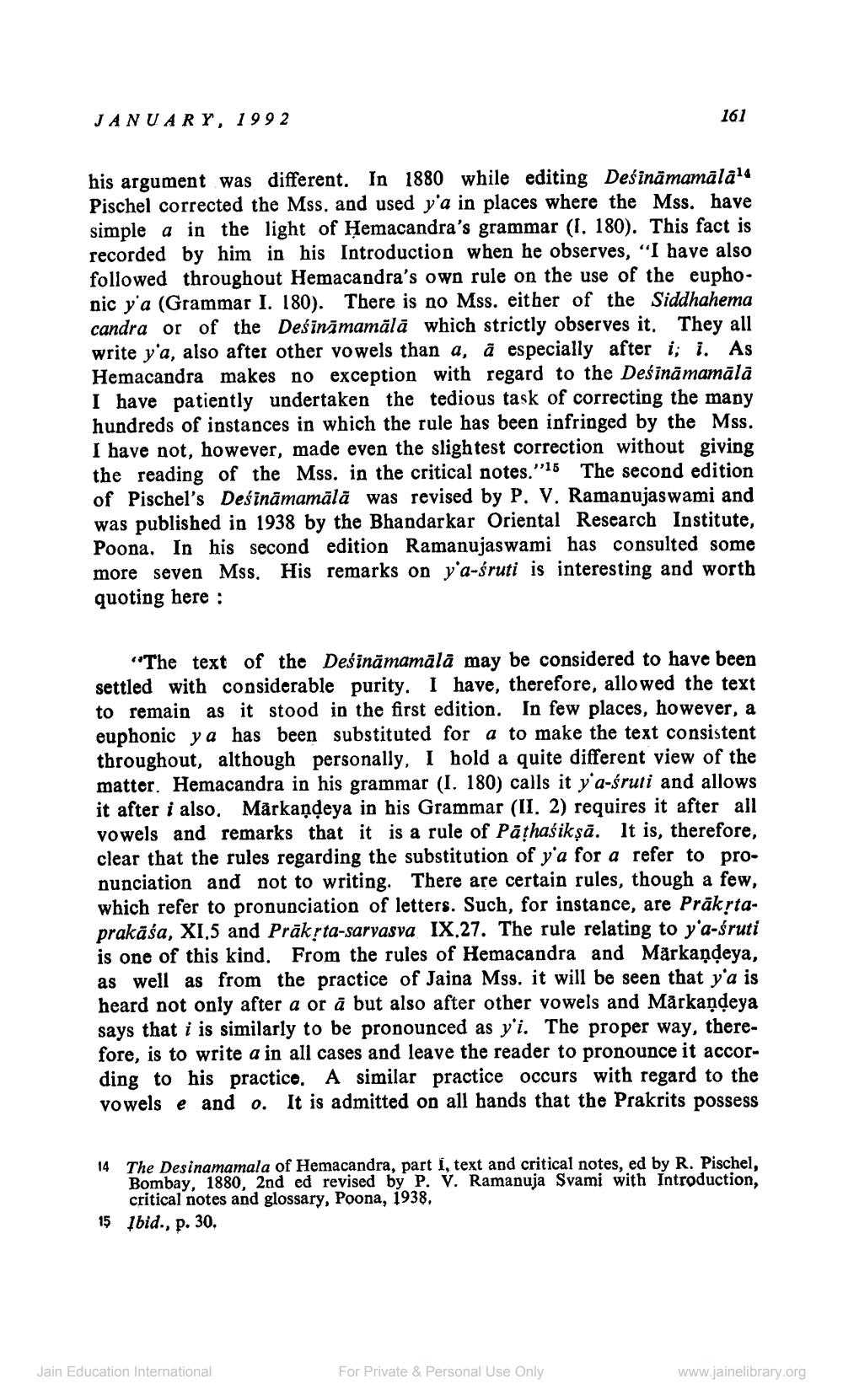________________
JANUARY, 1992
161
his argument was different. In 1880 while editing Desināmamāla14 Pischel corrected the Mss, and used y'a in places where the Mss. have simple a in the light of Hemacandra's grammar (1. 180). This fact is recorded by him in his Introduction when he observes, “I have also followed throughout Hemacandra's own rule on the use of the euphonic y'a (Grammar I. 180). There is no Mss. either of the Siddhahema candra or of the Dešinimamālā which strictly observes it. They all write y'a, also after other vowels than a, à especially after i; i. As Hemacandra makes no exception with regard to the Deśināmamālā I have patiently undertaken the tedious task of correcting the many hundreds of instances in which the rule has been infringed by the Mss. I have not, however, made even the slightest correction without giving the reading of the Mss. in the critical notes."15 The second edition of Pischel's Deśināmamālā was revised by P. V. Ramanujaswami and was published in 1938 by the Bhandarkar Oriental Research Institute, Poona. In his second edition Ramanujaswami has consulted some more seven Mss. His remarks on y'a-śruti is interesting and worth quoting here :
«The text of the Deśināmamālā may be considered to have been settled with considerable purity. I have, therefore, allowed the text to remain as it stood in the first edition. In few places, however, a euphonic ya has been substituted for a to make the text consistent throughout, although personally, I hold a quite different view of the matter. Hemacandra in his grammar (I. 180) calls it y'a-śruti and allows it after i also. Märkandeya in his Grammar (II. 2) requires it after all vowels and remarks that it is a rule of Pathaśikṣā. It is, therefore, clear that the rules regarding the substitution of y'a for a refer to pronunciation and not to writing. There are certain rules, though a few, which refer to pronunciation of letters. Such, for instance, are Präkrtaprakāśa, XI.5 and Prākrta-sarvasva IX.27. The rule relating to y'a-śruti is one of this kind. From the rules of Hemacandra and Märkandeya, as well as from the practice of Jaina Mss. it will be seen that y'a is heard not only after a or ā but also after other vowels and Markandeya says that i is similarly to be pronounced as y'i. The proper way, therefore, is to write a in all cases and leave the reader to pronounce it according to his practice. A similar practice occurs with regard to the vowelse and o. It is admitted on all hands that the Prakrits possess
14
The Desinamamala of Hemacandra, part I, text and critical notes, ed by R. Pischel, Bombay, 1880, 2nd ed revised by P. V. Ramanuja Svami with Introduction, critical notes and glossary, Poona, 1938. Ibid., p. 30.
15
Jain Education International
For Private & Personal Use Only
www.jainelibrary.org




